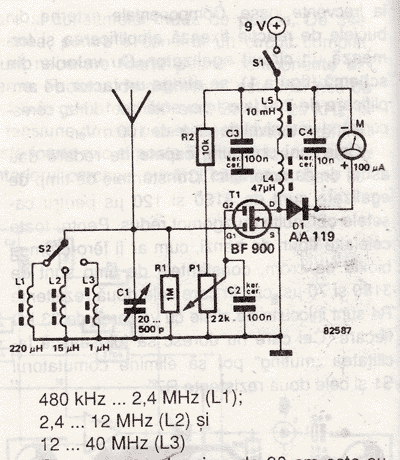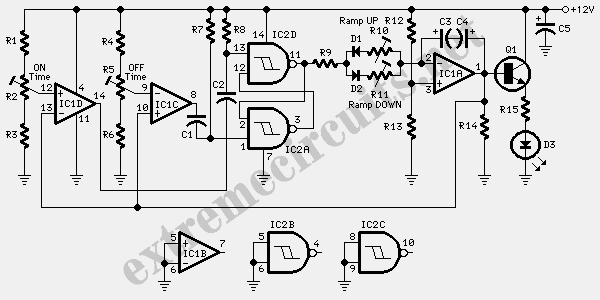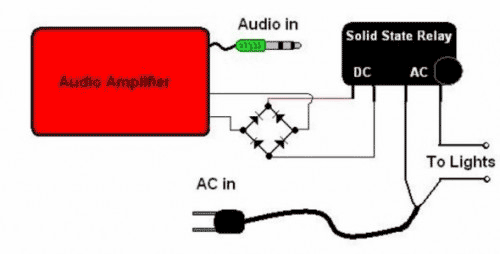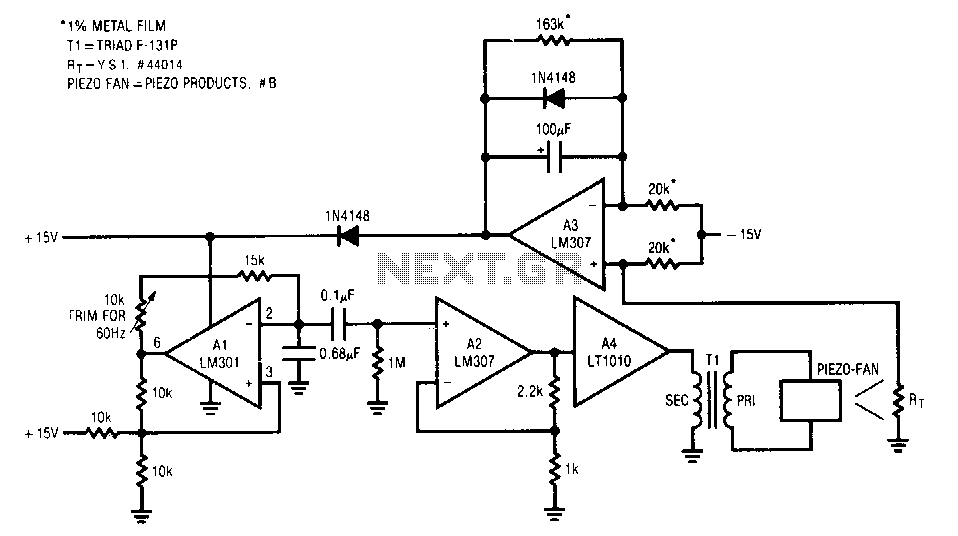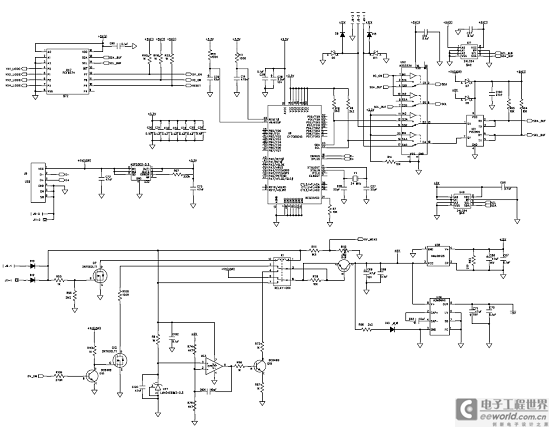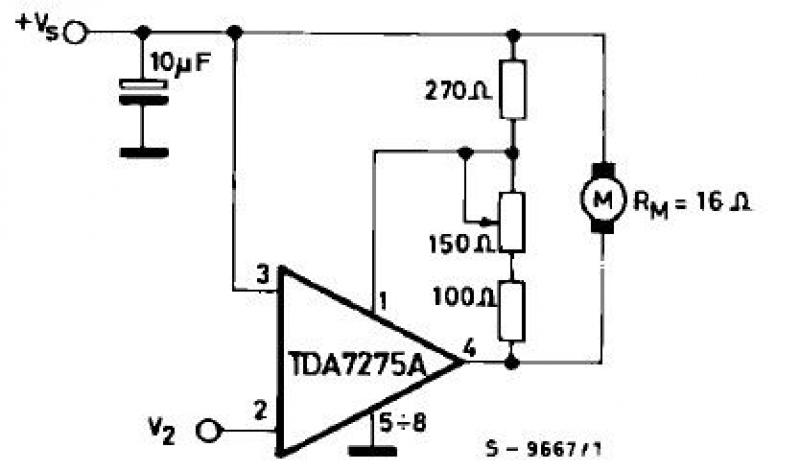
R/C Timer-Switch for Radio Control Applications
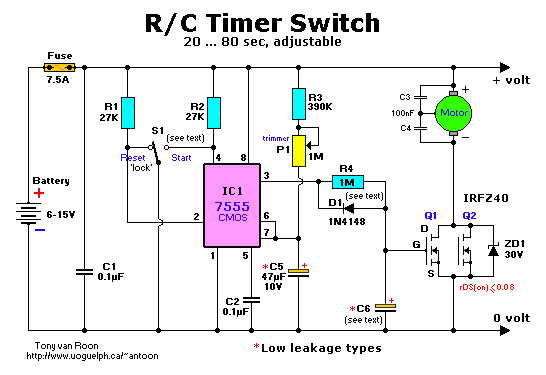
The project originated from a request by Tony Bowler, a member of the Long Eaton Club, who sought assistance in converting a "Golden Oldie" model to electric free-flight. He selected Vic Smeed's "Debutante" to be powered by seven AE size cells and a Speed-400 motor but recognized the need for a timer to provide a predetermined motor run time. The proposed design is capable of switching up to 12 amps and includes an optional soft-start feature for gearbox applications. It is straightforward to construct, with all components available from Maplins for under $10. The "ON" time can be adjusted from 20 to 80 seconds, with possibilities for other variations. The core of the circuit utilizes the widely used CMOS Timer IC, 7555. Upon applying power from the battery, the IC's output pin 3 is initially set to "OFF" (0V), discharging capacitor C5 completely. When a momentary start signal is applied to pin 2, the output switches to "ON" (+V), activating the MOSFETs and the motor through the soft-start circuit consisting of R4, D1, and C6 (if included). This circuit gradually increases the current to the motor. If a soft start is not needed, these components can be omitted, and pin 3 can be connected directly to the MOSFET gate terminals. When the voltage across C5 reaches 2/3V, the IC detects this condition and switches the output "OFF," turning off the MOSFETs and the motor via D1. The 7555 timer IC also re-establishes the short across C5, returning the circuit to its initial state for the next motor run. Zener diode D2 protects the MOSFETs from high-frequency transients generated by DC motors. Additionally, spark suppression capacitors C3 and C4 should be connected directly from the motor terminals to its casing (0.1uF ceramic disc types are suitable). Component values include R3 = 390K, R4 = 1M, P1 = 1M (trimmer), C1, C2, C3, C4 = 0.1uF (100nF), C5 = 47uF/10V low-leakage electrolytic, C6 = optional, D1 = 1N4148, 1N914, or equivalent, ZD1 = 30V Zener Diode, IC1 = 7555 CMOS Timer, Q1, Q2 = BUZ11 MOSFET or equivalent, S1 = on-off-on switch. The fuse rating is 7.5A. Capacitors C1 to C4 should be ceramic 50V types, while C5 requires a low-leakage type like tantalum. C6 is optional and its value may vary based on the soft-start circuit and the number of parallel MOSFETs; starting with 22 µF is recommended. S1 is a special toggle switch that locks in one position to prevent accidental activation when the user is not prepared. An alternative power-disable mechanism can be designed if the specified switch is unavailable. S1 should be of the on-center-on type. Q1 and Q2 are BUZ11, N-channel, Power, Hi-Speed Switch, TMOS FETs rated for approximately 25A each. Substitutes are acceptable, provided that the rDS switch-on resistance remains at 0.05 ohms or lower to ensure proper circuit operation. Suitable alternatives include IRFZ30, IRFZ32, IRFZ40, or IRFZ42, with respective rDS(on) values of 0.05, 0.08, 0.028, and 0.035 ohms. These MOSFETs feature a "Power Enhancement Mode," with the IRFZ40/IRFZ42 rated for 46/51 Amps, potentially allowing for a single MOSFET configuration. R4, D1, and C6 are optional for soft start functionality. If soft start is not required, these components can be omitted. C3 and C4 provide spark suppression across the motor terminals, which is not necessary but beneficial if a brushless motor is not used. The 30V zener diode D2 serves to protect the MOSFETs from voltage transients. Substitutes for Q1 and Q2 must be capable of handling at least 6 amps comfortably.The project started with a request from a fellow member of the Long Eaton Club, Tony Bowler. He was interested in converting one of the `Golden Oldies` to electric free-flight. He choose Vic Smeed`s "Debutante" to power with seven AE size cells and a Speed-400 motor, but realized he required some sort of timer to give a predetermined motor run, an d asked if I could help. The design I came up with seems to fit the bill. It will switch up to 12 amps, has an optional soft-start for gear box applications, is simple to construct and all the bits are readily available from Maplins for under $10. The `ON` time is adjustable from 20 to 80 seconds, but other variations of the running time can be achieved.
The heart of the circuit is the popular CMOS Timer IC, 7555. When power is applied from the battery, the IC`s output pin 3 is switched `OFF` (0V) and a short circuit applied to C5, thus ensuring it is completely discharged. When a momentary start signal is applied to pin 2, the output immediately switches `ON` (+V), thus switching on the MOSFETs and the motor via the soft start circuit R4, D1 and C6 (if fitted).
This latter circuit slows down the switching on of the MOSFETs, giving a more gradual increase in current to the motor. If soft start is not required, omit these components and wire pin 3 directly to the MOSFET gate terminals G.
When the voltage across C5 reaches 2/3V, the IC detects this and its output switches `OFF`, thus immediately switching the MOSFETs and the motor off via D1. The 7555 timer IC also re-applies the short across C5 and the circuit returns to its initial condition ready for the next motor run.
Zener diode D2 provides protection to the MOSFETs from the high frequency transients that all DC motors generate, but do not omit the normal spark suppression capacitors C3 and C4 wired directly from the motor terminals to its case (0. 1uF ceramic disc types are fine). R3 = 390K R4 = 1M P1 = 1M, trimmer C1, C2, C3, C4 = 0. 1uF (100nF) C5 = 47uF/10V, low-leakage electrolytic C6 = (optional) D1 = 1N4148, 1N914, or equivalent ZD1 = Zener Diode, 30V IC1 = 7555 CMOS Timer Q1, Q2 = BUZ11 MOSFET, or equivalent S1 = on-off-on switch (see text) Fuse = 7.
5A C1 to C4 are of the ceramic 50V types. C5 has to be a low-leakage type like tantalum or something. C6 an is optional electrolytic type and no exact value is specified; it depends on the `Soft-Start` part of the circuit and quantity of MOSFETs you stack in parallel. Start with 22 µF and increase the value if needed. S1 is a special toggle switch which locks on one-side to prevent accidental injury by flipping the switch to the `start` position when you`re not ready yet.
Or fabricate some sort of `power-disable` thingy if you are unable to obtain this switch. The switch should be the on-center-on type. Q1 & Q2 are BUZ11, N-channel, Power, HiSpeed Switch, TMOS Fets, each at about 25A each. Substitutes are fine as long as you keep the rDS switch-on resistance of 0. 05 ohms or less in mind or you may find that the circuit will switch on fine but does not switch off after the pre-determined time you have set it for with trimmer pot P1. For example, the IRFZ30, IRFZ32, IRFZ40, or IRFZ42 are good choices with an rDS(on) of 0. 05, 0. 08, 0. 028, and 0. 035 ohms. These type mosfets have a so-called `Power Enhancement Mode` feature. Especially the IRFZ40/IRFZ42 are 46/51Amps which probably allows you to get away with one mosfet only.
They are however a bit more expensive. R4, D1, and C6 are optional for a soft start. If you don`t require the soft-start then leave them out. C3 & C4 are wired straight across the motor terminals for spark suppression which every electric motor generates. Not needed of course (but does no harm) if you use a brushless motor. The 30V zener diode D2 is to protect the mosfets from transients. Your choice of substitutes for Q1 and Q2, if you can`t find the BUZ11, has to switch comfortably 6 amps e
🔗 External reference
The heart of the circuit is the popular CMOS Timer IC, 7555. When power is applied from the battery, the IC`s output pin 3 is switched `OFF` (0V) and a short circuit applied to C5, thus ensuring it is completely discharged. When a momentary start signal is applied to pin 2, the output immediately switches `ON` (+V), thus switching on the MOSFETs and the motor via the soft start circuit R4, D1 and C6 (if fitted).
This latter circuit slows down the switching on of the MOSFETs, giving a more gradual increase in current to the motor. If soft start is not required, omit these components and wire pin 3 directly to the MOSFET gate terminals G.
When the voltage across C5 reaches 2/3V, the IC detects this and its output switches `OFF`, thus immediately switching the MOSFETs and the motor off via D1. The 7555 timer IC also re-applies the short across C5 and the circuit returns to its initial condition ready for the next motor run.
Zener diode D2 provides protection to the MOSFETs from the high frequency transients that all DC motors generate, but do not omit the normal spark suppression capacitors C3 and C4 wired directly from the motor terminals to its case (0. 1uF ceramic disc types are fine). R3 = 390K R4 = 1M P1 = 1M, trimmer C1, C2, C3, C4 = 0. 1uF (100nF) C5 = 47uF/10V, low-leakage electrolytic C6 = (optional) D1 = 1N4148, 1N914, or equivalent ZD1 = Zener Diode, 30V IC1 = 7555 CMOS Timer Q1, Q2 = BUZ11 MOSFET, or equivalent S1 = on-off-on switch (see text) Fuse = 7.
5A C1 to C4 are of the ceramic 50V types. C5 has to be a low-leakage type like tantalum or something. C6 an is optional electrolytic type and no exact value is specified; it depends on the `Soft-Start` part of the circuit and quantity of MOSFETs you stack in parallel. Start with 22 µF and increase the value if needed. S1 is a special toggle switch which locks on one-side to prevent accidental injury by flipping the switch to the `start` position when you`re not ready yet.
Or fabricate some sort of `power-disable` thingy if you are unable to obtain this switch. The switch should be the on-center-on type. Q1 & Q2 are BUZ11, N-channel, Power, HiSpeed Switch, TMOS Fets, each at about 25A each. Substitutes are fine as long as you keep the rDS switch-on resistance of 0. 05 ohms or less in mind or you may find that the circuit will switch on fine but does not switch off after the pre-determined time you have set it for with trimmer pot P1. For example, the IRFZ30, IRFZ32, IRFZ40, or IRFZ42 are good choices with an rDS(on) of 0. 05, 0. 08, 0. 028, and 0. 035 ohms. These type mosfets have a so-called `Power Enhancement Mode` feature. Especially the IRFZ40/IRFZ42 are 46/51Amps which probably allows you to get away with one mosfet only.
They are however a bit more expensive. R4, D1, and C6 are optional for a soft start. If you don`t require the soft-start then leave them out. C3 & C4 are wired straight across the motor terminals for spark suppression which every electric motor generates. Not needed of course (but does no harm) if you use a brushless motor. The 30V zener diode D2 is to protect the mosfets from transients. Your choice of substitutes for Q1 and Q2, if you can`t find the BUZ11, has to switch comfortably 6 amps e
🔗 External reference
Warning: include(partials/cookie-banner.php): Failed to open stream: Permission denied in /var/www/html/nextgr/view-circuit.php on line 713
Warning: include(): Failed opening 'partials/cookie-banner.php' for inclusion (include_path='.:/usr/share/php') in /var/www/html/nextgr/view-circuit.php on line 713
